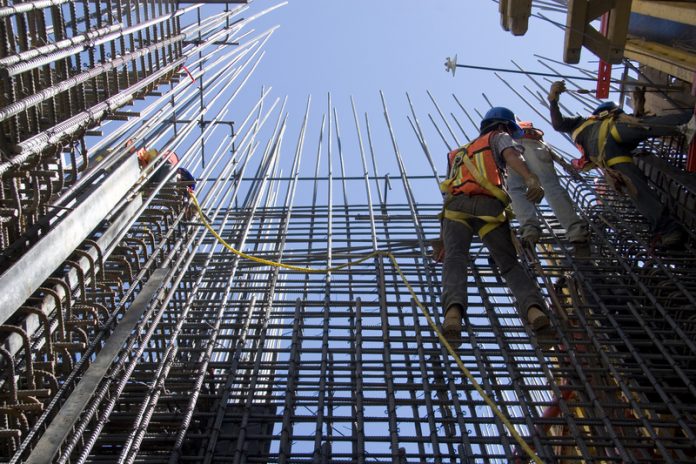Working at height can often generate an unnerving concern for an insurer. This is due to the increased risk of injury carrying out such activities can bring
Public Liability Insurance covers accidental third-party damage, and working at height obviously increases the threat of something being dropped from height. Classic examples we have seen over the years include damage to vehicles parked near a site, building materials falling from scaffolding and hitting another contractor below and even items falling from a building site onto passers-by.
Employers Liability Insurance covers injury or death to an employee, and a fall from height can obviously result in a life-changing injury or even a potential fatality. Over the years, insurers have seen some significant claims from a fall from height, and this is one of the core areas of concern for a liability insurer.
“Standard” insurance cover when working at height
Typical Public Liability policies will have a height restriction of 10m or 15m, and we would advise that you should check your policy wording if you are working at heights greater
than this. This is often frustrating to contractors who work on buildings that are arguably on the cusp of these limits or, of course, those working on buildings that far exceed these heights. Even a three-storey building could be greater than these limits, which means that in the event of a loss, such activities would be excluded from cover, which could prevent a claim from being paid.
To avoid this, we recommend you check your policy and amend this in line with your individual requirements. Policies can be purchased for any height but often come with a more expensive premium.
Insurance is usually written on a per capita or a wages and turnover basis. When it comes to the number of people working at height, you can expect insurers to charge more where there are multiple people doing so, as every person working will add to the risk of a fall from height.
Another standard exclusion to look out for when working at height is heat work. If you do not declare the heat works you are carrying out, then these works could also potentially be excluded. Again, expect to see increased premiums when there are heat work activities at height.
How to satisfy insurers concerns when working at height
Working at height is an increased risk and makes underwriters apprehensive. As mentioned earlier, there is nothing we can do to change that fact. Having said that, there are considerable factors that we can address to satisfy the concerns of underwriters:
- Breakdown: Splitting the % that you work at different heights could show insurers that the risk isn’t so severe, which could drastically affect the premium. We can work with you to show you how to do this effectively.
- Qualifications: Being a member of a recognised trade body for your sector and/or having a recognised qualification will help us obtain significant discounts.
- Experience: In the current climate, we are seeing more people either starting out for the first time or creating a “phoenix” company (set up following financial difficulties for a previous company, which resulted in it ceasing to trade). The trading experience is then deemed minimal, causing an insurer to either decline cover or impose a big premium on the risk. However, often there is a background story which can prove a higher level of experience and working with a good broker to help demonstrate this can be invaluable.
- Location: Working at height doesn’t always mean that you are working on the edge of a building or hanging from the side. However, if not declared properly to an insurer, this can be an assumption they make. It is crucial to tell us exactly where the works are taking place as, if you are working 10m from the edge, for example, demonstrating this to insurers will reduce the premium.
- Risk management: Demonstrating a competent risk management procedure can secure huge savings. Detailed risk assessments, method statements and similar documents are all ammunition that can be used to negotiate better premiums. Anything you have in respect of these documents and general health & safety on site is key to helping us work with insurers to get the best solution for you.
Generally, insurers expect you to work to industry standards and best practices. The theory being if you work to best practice standards, you mitigate the chance of having a loss. Fewer claims for you means lower insurance premiums that you will pay.
If you want to discuss such matters further with one of our team, we will review your current arrangements and provide quotations for when your policies are due for renewal.
We offer all aspects of Construction & Development Insurance, including but not limited to:
- Latent defects insurance
- Contractors all risk
- Insurance-backed guarantees
- Surety bonds
- Professional indemnity
- JCT 6.5.1 (Non-negligent liability)
- Rights of light
- Credit insurance
- Directors’ and officers’ liability
- Legal indemnities
- Motor fleet
- Property & buildings insurance
Contact our Construction Team today!
construction@reichinsurance.co.uk
0161 830 7538
Mitch Cookney
Head of Construction
Tel: 07887811352 or 0161 830 7538
construction@reichinsurance.co.uk or
mitch.cookney@reichinsurance.co.uk
*Please note: This is a commercial profile

















